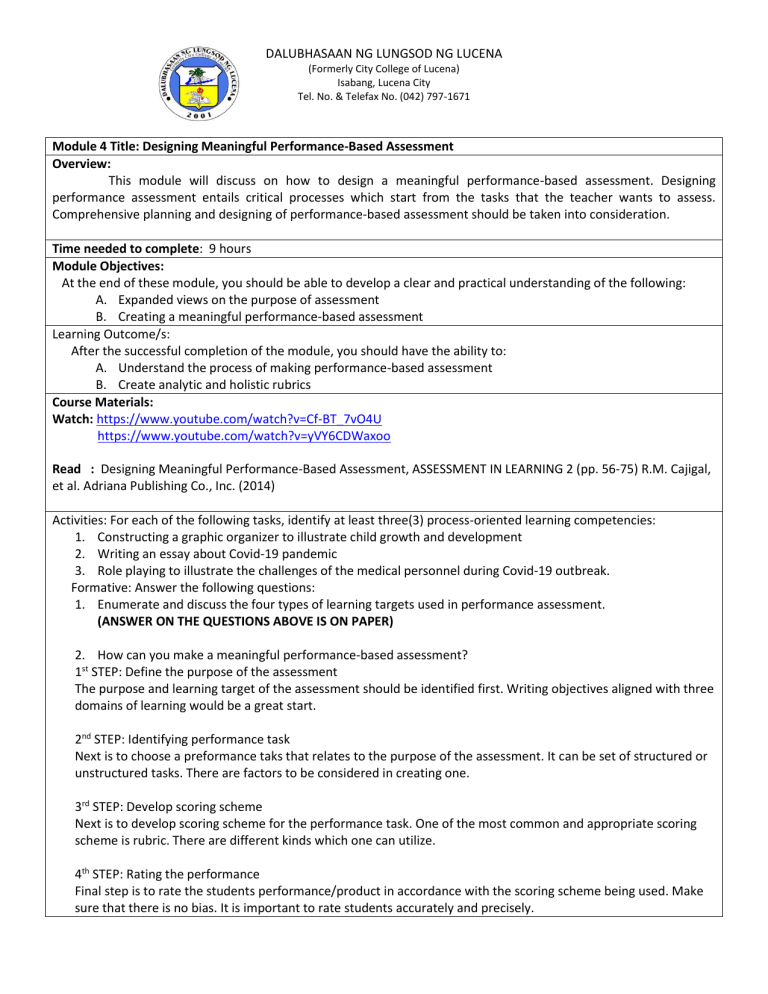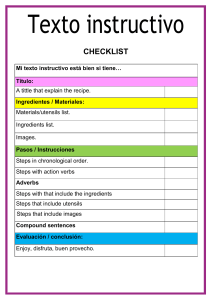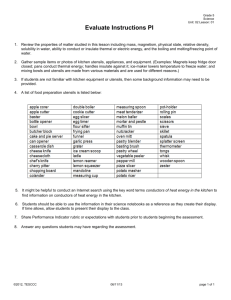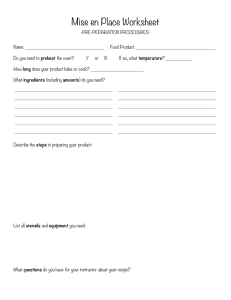
DALUBHASAAN NG LUNGSOD NG LUCENA (Formerly City College of Lucena) Isabang, Lucena City Tel. No. & Telefax No. (042) 797-1671 Module 4 Title: Designing Meaningful Performance-Based Assessment Overview: This module will discuss on how to design a meaningful performance-based assessment. Designing performance assessment entails critical processes which start from the tasks that the teacher wants to assess. Comprehensive planning and designing of performance-based assessment should be taken into consideration. Time needed to complete: 9 hours Module Objectives: At the end of these module, you should be able to develop a clear and practical understanding of the following: A. Expanded views on the purpose of assessment B. Creating a meaningful performance-based assessment Learning Outcome/s: After the successful completion of the module, you should have the ability to: A. Understand the process of making performance-based assessment B. Create analytic and holistic rubrics Course Materials: Watch: https://www.youtube.com/watch?v=Cf-BT_7vO4U https://www.youtube.com/watch?v=yVY6CDWaxoo Read : Designing Meaningful Performance-Based Assessment, ASSESSMENT IN LEARNING 2 (pp. 56-75) R.M. Cajigal, et al. Adriana Publishing Co., Inc. (2014) Activities: For each of the following tasks, identify at least three(3) process-oriented learning competencies: 1. Constructing a graphic organizer to illustrate child growth and development 2. Writing an essay about Covid-19 pandemic 3. Role playing to illustrate the challenges of the medical personnel during Covid-19 outbreak. Formative: Answer the following questions: 1. Enumerate and discuss the four types of learning targets used in performance assessment. (ANSWER ON THE QUESTIONS ABOVE IS ON PAPER) 2. How can you make a meaningful performance-based assessment? 1st STEP: Define the purpose of the assessment The purpose and learning target of the assessment should be identified first. Writing objectives aligned with three domains of learning would be a great start. 2nd STEP: Identifying performance task Next is to choose a preformance taks that relates to the purpose of the assessment. It can be set of structured or unstructured tasks. There are factors to be considered in creating one. 3rd STEP: Develop scoring scheme Next is to develop scoring scheme for the performance task. One of the most common and appropriate scoring scheme is rubric. There are different kinds which one can utilize. 4th STEP: Rating the performance Final step is to rate the students performance/product in accordance with the scoring scheme being used. Make sure that there is no bias. It is important to rate students accurately and precisely. Summative: 1. Create both analytic and holistic rubrics for: a.) Baking Choco moist cake Baking Choco Moist Cake (holistic rubric) SCORE 5 4 3 2 Criteria All steps were followed with great precision. It was perfectly cooked. The cake was perfectly dense. The taste is very similar to the standard. Most steps were followed with great precision. It was slightly under/over cooked. The cake was slightly underly/overly dense. The taste is slightly similar to the standard. Only few steps were followed with great precision. It was under/over cooked. The cake was underly/overly dense. The taste is similar to the standard. Some steps were not followed. It was under/over cooked. The cake was underly/overly dense. The taste is different to the standard. Baking Choco Moist Cake (analytic rubric) CATEGORY Step by step procedure. Cake doneness. Taste compared to standard. 5 All steps were followed with great precision. Cake was perfectly moist. The cake tastes exactly like the standard. DESCRIPTION 4 Few steps were not followed with great precision. Cake was a slightly under/overcooked. The cake tastes similar to the standard. 3 There were few missed steps. Cake was under/over cooked. The cake taste different from the standard. b.) Table setting (American Service) Table Setting (American Service) (holistic rubric) 5 4 3 2 Criteria All utensils were placed on the table. All utensils on the table were properly arranged. All utensils were accurately placed. There were 1-2 utensils that were not placed on the table. All utensils on the table were properly arranged. All utensils on the table were accurately placed. There were 1-2 utensils that were not placed on the table. 1-2 utensils on the table were not properly arranged. 1-2 utensils on the table were not accurately placed. There were more than 3 utensils that were not placed on the table. Morethan 3 utensils on the table were not properly arranged. Morethan 3 utensils on the table were not accurately placed. Table Setting (American Service) (analytic rubric) CATEGORY The utensils placed on the table. Utensils’ position accuracy Utensils’ arrangement 5 All utensils were placed on the table. DESCRIPTION 4 1-2 utensils were not placed on the table. All utensils on the table were accurately placed. All utensils on the table were properly arranged. 1-2 utensils on the table were inaccurately placed. 1-2 utensils on the table were improperly arranged. 3 More than 3 utensils were not placed on the table. More than 3 utensils on the table were inaccurately placed. Morethan 3 utensils on the table were improperly arranged. 2. Using a Venn diagram, compare and contrast the Analytic and Holistic Rubrics Assessments For Further Study: Process-Oriented Performance-Based Assessment. AUTHENTIC ASSESSMENT OF STUDENT LEARNING OUTCOMES 2ND EDITION (pp. 32-54) R.L.Navaro,Ph.D. et al, Lorimar Publishing,Inc. Copy Right 2013 Prepared by: Florian E. Manzanilla




